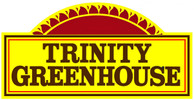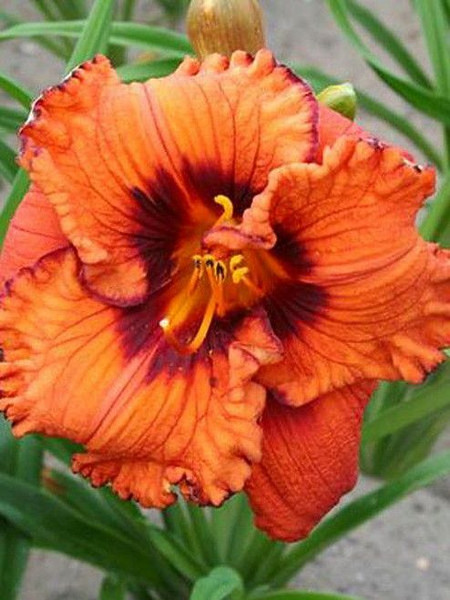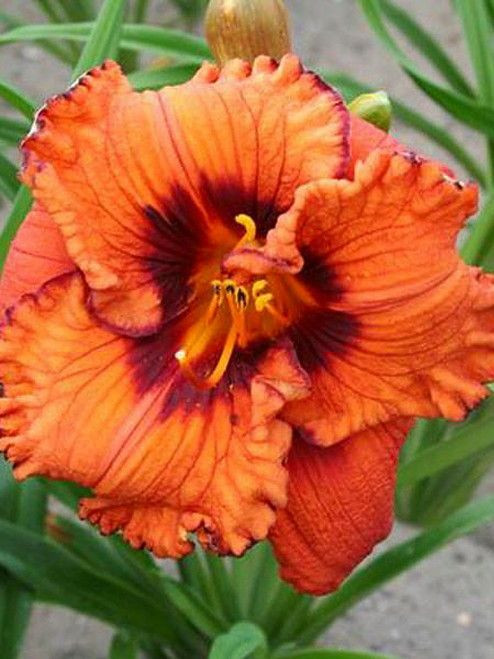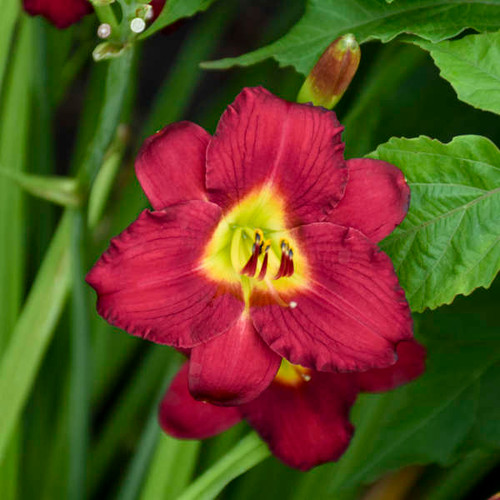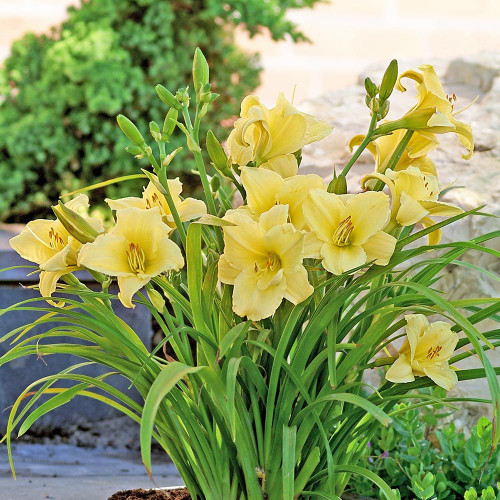Product Overview
Early-mid, the huge 5 1/2" orange flowers with crinkly ruffles are outlined by a dark purple picotee edge and center, tetraploid, extremely sunfast and drought tolerant, excellent rebloomer.
Using two Greek words, lemera ("day") and kellos ("beautiful"), Hemerocallis were aptly named in reference to the one-day duration of each flower's opening. While these Daylilies are botanically disparate from true Lilies--due to bloom behavior and the evidence of roots rather than bulbs--both types of plants belong to the broad and very diverse Lily family (Lilaceae). Hemerocallis, traditionally "collector" plants, were infused with vast color and form improvements by American hybridists following World War II. Because of this, today we enjoy Hemerocallis' amazing hues and tones, and forms are now available in the original funnel shape, as well as undulating, incurred, or even crisped. Overall, Hemerocallis are generally regarded to be easygoing and accommodating, rugged and long-lived. They are garden standards tolerant of full sun or shade, can thrive in nearly any soil, and are resistant to the attacks of disease and insect pests.
Daylilies belong in every garden. Their trumpet-shaped flowers, which are borne on leafless stalks above grasslike foliage in midsummer, last just a day, but it always seems there are more on the way.
Daylilies can survive many harsh conditions that other plants cannot including: polluted city environments, slopes, poor and dry soils, near pavement that is salted in winter, and under Black Walnut trees (not affected by juglone).
